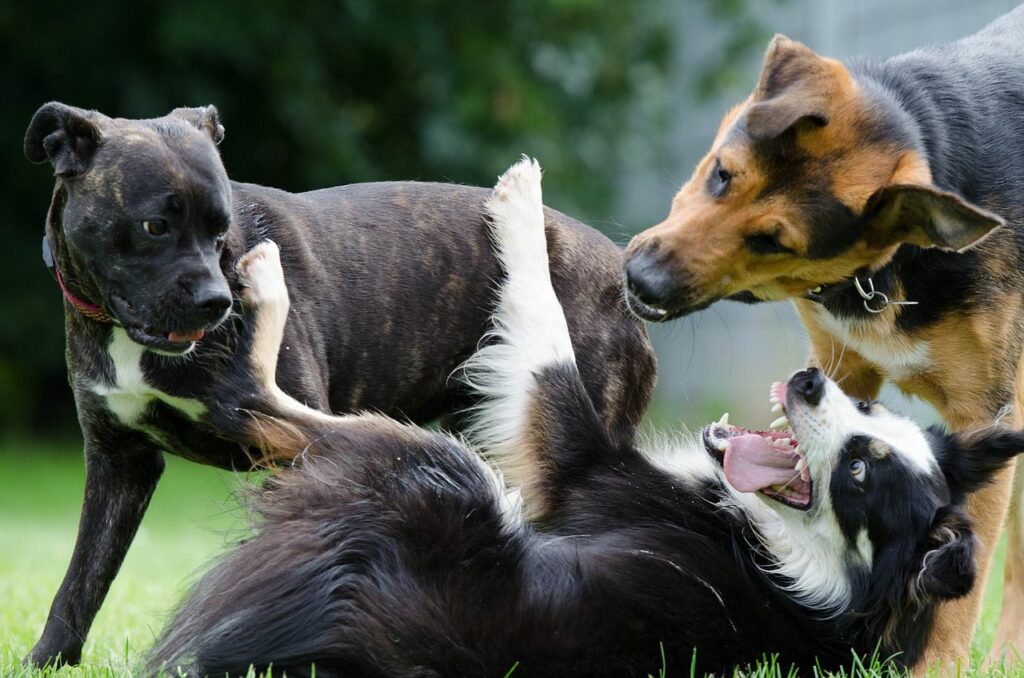Table of Contents
Dealing with a dominant dog can be challenging, but with the right approach, you can establish a healthy, respectful relationship. The best dealing with a dominant dog strategies involve consistency, assertiveness, and positive reinforcement. In this guide, we provide seven effective strategies to help you manage and train a dominant dog successfully.

Top Strategies for Dealing with a Dominant Dog
1. Establish Clear Leadership
Dominant dogs need clear leadership from their owners. Establish yourself as the pack leader by setting consistent rules and boundaries. This doesn’t mean using force; rather, it means being calm, assertive, and consistent. For more on establishing leadership, visit Cesar’s Way Pack Leader Tips.
2. Consistent Training
Consistency is key when training a dominant dog. Ensure that everyone in the household enforces the same rules and uses the same commands. Consistent training helps reinforce desired behaviors and reduces confusion. For training consistency tips, visit AKC Training Consistency.
3. Use Positive Reinforcement
Positive reinforcement is an effective method for dealing with dominant dogs. Reward good behavior with treats, praise, or playtime. This encourages your dog to repeat these behaviors. Avoid punishment, as it can escalate dominance issues. For more on positive reinforcement, see PetMD Positive Reinforcement.
4. Set Boundaries and Limits
Set clear boundaries and limits to manage dominant behavior. For example, don’t allow your dog to jump on furniture without permission or to demand attention. Teach commands like “sit” and “stay” to reinforce boundaries. For more on setting boundaries, visit The Spruce Pets Boundary Training.
5. Socialization
Proper socialization is crucial for managing dominance. Expose your dog to different environments, people, and other dogs to help them learn appropriate behavior. Socialization can reduce fear and aggression, making your dog more balanced. For socialization tips, see ASPCA Socialization Tips.
6. Exercise and Mental Stimulation
Ensure your dominant dog gets plenty of exercise and mental stimulation. Physical activity helps reduce excess energy that can lead to dominance issues. Mental stimulation, such as puzzle toys and training games, keeps your dog engaged and focused. For exercise ideas, visit AKC Exercise Ideas.
7. Seek Professional Help if Needed
If you’re struggling to manage a dominant dog, don’t hesitate to seek professional help. A certified dog trainer or behaviorist can provide personalized guidance and strategies. They can help address specific issues and ensure you and your dog have a healthy relationship. For finding a professional, see APDT Dog Trainer Directory.
Conclusion on Dealing with a Dominant Dog
Dealing with a dominant dog requires patience, consistency, and a clear understanding of leadership. By following these effective strategies for dealing with a dominant dog, you can foster a respectful and balanced relationship with your pet. Remember to use positive reinforcement, set clear boundaries, and seek professional help if needed. For more advice on dog training, check out our Pet Care Guide.
FAQs on Dealing with a Dominant Dog
How do I know if my dog is dominant?
Signs of dominance include guarding resources, demanding attention, ignoring commands, and aggressive behavior. If your dog exhibits these behaviors consistently, they may be displaying dominance.
Can a dominant dog be trained?
Yes, a dominant dog can be trained with the right approach. Consistent training, clear boundaries, and positive reinforcement can help manage dominance and encourage desired behaviors.
Is it okay to punish a dominant dog?
Punishment is not recommended for dealing with dominance issues, as it can escalate the behavior. Instead, focus on positive reinforcement and consistent training to encourage good behavior.
How can I establish myself as the pack leader?
Establish yourself as the pack leader by setting clear rules and boundaries, being consistent, and using positive reinforcement. Stay calm and assertive, and ensure all family members follow the same rules.
What if my dog’s dominance leads to aggression?
If your dog’s dominance leads to aggression, seek professional help from a certified dog trainer or behaviorist. They can provide personalized strategies to manage the behavior safely.
Can socialization help reduce dominance?
Yes, proper socialization can help reduce dominance by exposing your dog to different environments, people, and other dogs. This can help them learn appropriate behavior and reduce fear and aggression.











